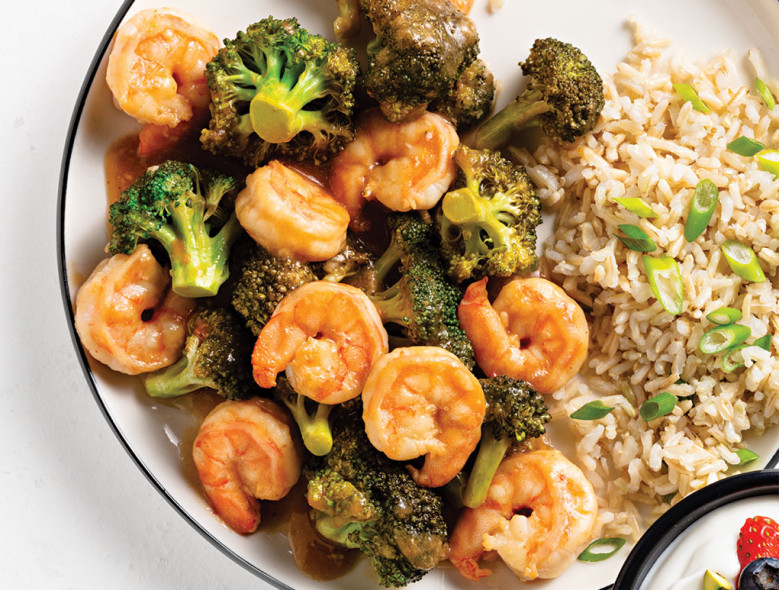
by Guest | Jun 22, 2022 | Eat Well
This is one of the good things that has come from the pandemic – Judith Yamada’s cookbook “Thrifty Comfort Cooking for Challenging Times.” Seeing a need to help all cooks be more efficient in the kitchen when dealing with food shortages and high prices, Yamada’s cookbook provides a welcome guide to making the most of what you on hand. Filled with helpful tips as well as dozens of delicious (and easy!) recipes this cookbook is truly a comfort, that will also benefit our local Food Bank.
Yamada has written articles for several publications as “The Kitchen Maven”, she says, “I’ve always loved to cook and bake – and eat.” She continues, “When the 2020 pandemic brought upheaval to everyone on the planet, my first concern as a senior citizen was for my own health, that of my family and for the lives in my community. Thankful for being retired, healthy and financially secure, Yamada spent her time in isolation improving her own health (she lost 40 pounds) and creating this cookbook in support of people experiencing food insecurity.
Daily life during a pandemic is unnerving enough without constant worries over whether you will go hungry tomorrow or have enough nutritious, sustaining meals to feed your family. This ongoing shortage has become more crucial than ever as local hunger relief programs observed a 40% rise in food insecurity and the need for assistance during the pandemic. According to Yamada, “I vividly remember being a young mother, scrimping to buy my toddler meat and vegetables and being grateful for my own meal of oatmeal and tea.” The current situation is even more challenging.
In February 2021, while focusing on improving her own health, she began writing a cookbook of modern cooking for challenging times, and these are definitely challenging times. The recipes are geared to help people cook with what they have at hand, to make substitutions as needed, and to easily and frugally incorporate more nutrition into everything from soups to desserts.
“My objective in writing this cookbook was to share wholesome, comforting, and thrifty recipes to help all cooks be more creative using whatever ingredients are available – fresh seasonal, frozen, or canned, and combine foods to improve both nutrition and satisfaction,” says Judith
Most of the recipes are simple with a few basic ingredients. Many contain nutrient-boosting additions to enrich common meals and retain great taste, and offer a variety of options, so cooks may substitute with ingredients they have on hand. Being more flexible with ingredients, saves money and can increase nourishment in our meals and snacks; we can all eat better, waste less and enjoy mealtime more than ever.
To maintain services for those affected by food insecurity, local Food Banks and other food relief agencies need continued aid. Whether we make monetary donations, volunteer our time, or write and contribute a cookbook, we can all help.
The Oregon Food Bank and the services it supports will be the recipients of all profits from the cookbook, and copies of the cookbook will be donated to the local Tillamook Food Bank for free distribution to Food Bank clients.
“Thrifty Cooking for Challenging Times” is available on both Amazon.com and Barnes & Noble.com. You can also follow the Kitchen Maven on Facebook for recipes and tips, visit www.kitchenmaven.org, or contact Judith Yamada at judith@kitchenmaven.org
AUTHOR: Laura Swanson, Tillamook County Pioneer Editor
Other wellness questions? Email us at info@tillamookcountywellness.org. For more local health and wellness information, visit www.tillamookcountywellness.org or follow Tillamook County Wellness on Facebook and Instagram.

by Guest | Jun 22, 2022 | Recipes
Excerpt below from “Thrifting Comfort Cooking for Challenging Times” by Judith Yamada
I love pancakes
Now, don’t get me wrong. When I get that urge for pancakes it isn’t a desire for those plain boring pancakes that many people say they don’t like. You know what I mean, the questionable bagged mixes and tasteless homemade plain fried dough cakes with no flavor. I make them tasty, that’s why.
Anyway, pancakes are a perfect example of thrifty hearty comfort food. Inexpensive and easy to prepare even from scratch, kids love them and can even help in preparation. I still have fond memories of Mum making homemade silver dollar pancakes for Saturday night suppers when Dad worked past our bedtimes.
These quick treats can, of course, be simple and splathered with butter and maple syrup. They can be nutritionally motivated by incorporating nutrition rich ingredients like eggs, tofu, pumpkin puree, yogurt, whole grains, summer squash or fruit. And they can become delicious savory suppers with the addition of herbs, squash blossoms, cheese (ricotta is especially good) nuts, veggies, smoked fish, or cooked lean meats.
One of my favorite pancake recipes is Whole Wheat Zucchini Pancakes which I serve with fresh berry sauce. What’s great about these is the use of all that zucchini. You can go through a lot of summer zucchini during the growing season, making those yummy pancakes. And, for a taste of summer, these are just as delicious and fluffy using frozen shredded zucchini that’s been defrosted and drained.
Amazingly, my hubby (who doesn’t love vegetables) loves these. In my kitchen, that says a lot.
Wilderness House Zucchini Pancakes
My old Zucchini cookbook from 1976 has the most wonderful zucchini recipes, and this one is no exception. These are speckled in green, fluffy, tender, delicious – and healthy. You’ll be amazed.
Ingredients:
- 2 large eggs – beaten
- 1 cup low fat unsweetened milk OR buttermilk
- 1 Tablespoon honey OR maple syrup
- 2 Tablespoons vegetable oil
- 1 ½ cups whole-wheat flour OR gluten free flour mix
- 1 Tablespoon baking powder
- ½ teaspoon salt
- ¼ teaspoon baking soda
- 1 ½ cups shredded zucchini, including green skin but no seeds*
- Oil for griddle
Directions:
- In a medium bowl, whisk together the beaten eggs with other liquids.
- In another bowl, whisk together dry ingredients.
- Combine both mixtures, stirring very little. Don’t over mix.
- Gently and evenly fold in the shredded zucchini throughout batter.
- Spoon ¼ cup batter (for each pancake) onto lightly oiled griddle, preheated to medium low or medium heat. Turn cakes when bubbles begin popping on top but turn only once and don’t press them down. Brown other side. Keep warm in oven (170 F.) until all the pancakes are done. Top with the berry sauce below, other fruit, honey, soft cheese, syrup, or a little butter. 3-4 servings
Adapted from original: Zucchini Cookery/Wilderness House
*Frozen shredded zucchini works perfectly for these. Defrost and drain 2 cups of shredded zucchini before using.
Warm Berry Sauce
- 3 cups washed fresh berries
- ¼ cup water
- 3 Tablespoons real maple syrup or honey or natural fruit spread**
- Pinch salt
If using for a pancake or waffle topping, start the sauce first.
If using strawberries in the sauce, hull and slice them. Halve blackberries. Use any combination of berries you have*. Put all ingredients in a 2-quart saucepan on medium high heat until mixture simmers. Lower heat to maintain a constant, light bubbling. Stir every few minutes. Sauce will thicken as liquid evaporates (about 15 minutes). When the liquid is syrupy dripped from a spoon. It’s done. Remove from heat. Serves 2-4 as a topping for pancakes, waffles, shortcake, yogurt, or ice cream. If you don’t use all the sauce, refrigerate for another use. Use within 3 days.
*Frozen berries may be substituted. Use a 12-ounce package frozen unsweetened berries, and mash while cooking to obtain the preferred texture. Do not defrost the berries for this recipe.
** ½ cup unsweetened pineapple or orange juice may be substituted for the sweetener and water.
Original: Kitchen Maven

by Guest | Jun 15, 2022 | Eat Well
You may have heard that dairy foods like milk, yogurt, and cheese are foundational in a balanced diet, but did you know that there is strong emerging evidence that dairy foods could help you reduce your risk for Type 2 Diabetes (T2DM)? Here are 5 tips to help prevent or manage T2DM, while still enjoying some of your favorite dairy foods:
- Mix up your Movement and Power up with Protein – Incorporating a great mix of both aerobic (walking, running, hiking, etc) and resistance exercise (strength training, body-weight movements, etc.) throughout your week can have tremendous benefits in managing T2DM risk factors. Fueling up with a good protein source after exercise can also help give your body the amino acids needed to gain muscle, which can help improve how your body responds naturally to insulin and blood sugar. Top a cup of low fat Greek yogurt with a handful of fresh berries for a perfect, protein-packed after workout snack!
- Find balance with your Carbohydrates – Keeping track of the amount of carbohydrates you’re consuming in meals and snacks can make a world of difference for managing and preventing T2DM risk factors. Carbs can occur naturally in whole foods, or through processing with added sugars, starches, and syrups. Though the amount of carbs an individual needs vary, a single serving is considered 15 grams. Many dairy foods like milk, plain Greek yogurt, cottage cheese, and string cheese all naturally fall below the 15 gram mark for carbs per serving, and are a great option for those looking for a satisfying, carb-controlled food choice.
- Rethink your Drink – Sugar-sweetened drinks like soda, juice beverages, and energy drinks can sneak hundreds of “empty”calories (no nutritional value) into your diet without satisfying hunger. These drinks are loaded with simple carbohydrates that can wreak havoc on your ability to control blood sugar. If you’re looking for a mood-boosting drink alternative, try enjoying a glass of milk which is packed with natural B vitamins to give you an energizing pick-me-up.
- Consistency is key – Whether you’re trying to manage your weight, blood sugar levels, or both, one of the best strategies to practice is consistency with meals and snacks throughout your day. Sticking to a routine will help keep hunger at bay, prevent overeating, and provide consistent energy to feel your best. Most adults also struggle to get the nutrition needed from the USDA’s recommendations of 3 servings of dairy daily; so practicing consistency with your diet will give you more chances to add in some of your favorite foods from this group.
- Eat the Rainbow – Eating a colorful variety of foods from all food groups is key to living your best life, and can help you prevent and manage your diabetes risks. Here are some tasty and healthy combinations with other food groups from OSU Extension Food Hero you can try with your favorite dairy foods:
- Overnight oats with milk, yogurt, and fruit
- Cucumber yogurt dip with fresh veggies
- Baked tomatoes with cheese
- Tuna veggie melts with whole wheat English muffins and cheese
AUTHOR: Lewis Martin, Nutrition Director at Oregon Dairy and Nutrition Council
Resources:
- https://academic.oup.com/ajcn/article/103/4/1111/4662895?login=false
- https://www.usdairy.com/getmedia/f8f8a4d6-b529-4981-9a86-11e8b62f25d8/science-summary-type-2-diabetes-2021.pdf?ext=.pdf
- https://www.cdc.gov/diabetes/managing/eat-well/diabetes-and-carbohydrates.html
- www.Foodhero.org

by Guest | Jun 8, 2022 | Being Well
Are you making a difference in the world? Does your life matter? Having a sense of purpose is important to our overall well-being. People with purpose are happier, healthier and more productive. As a result, people who live “on purpose” live longer, better lives. We don’t need to visit a remote cave or mystical community to discover our sense of purpose. The clues are already present within us. Each of us has unique gifts and talents we can intentionally use to lead a more meaningful life.
Purpose Workshops help people identify their gifts and how they can apply them to live their best life. This is especially helpful when exploring relationships, jobs, volunteer opportunities, planning for retirement, and responding to major life events like marriage, divorce, birth and death. Our gifts even nudge us toward certain careers, relationships and even hobbies. If we never intentionally explore our gifts, we may never fully live or experience true joy in life.
During a purpose workshop, you are guided through a process to:
- Identify your gifts,
- Recognize how you apply your gifts, and;
- Use your gifts as sails for getting where you want to go and to navigate storms along the way
Have you ever met someone who just seems full of joy, happy to get out of bed each day no matter their job or what is happening in their lives? Often it is the community volunteer or workplace wellness warrior we see living out their purpose in this way. However, it can also be someone undergoing cancer treatment, or a person experiencing a serious life crisis, who seems to maintain a sense of perspective and an eye toward hope, even during dark times. What these people have in common is that they are tapping into intrinsic traits that bring them joy, peace and contentment, regardless of their circumstances.
While everyone has their own unique gifts, they often go undiscovered. Oliver Wendell Holmes said that most people go to their graves with their music still inside them. On a similar note, there is an ancient story about a man who travels the world over for many years seeking treasure, only to return home as an old man to discover the treasure was buried beneath his house all along. This is so common. We look everywhere, outside ourselves, our whole lives, for the very thing we already possess.
As mentioned earlier, there are clues that help us identify our gifts:
- What we do well and truly love doing
- How we most enjoy serving others
- When we lose track of time doing an activity, often referred to as “flow”
We may know someone who loves their job or a particular volunteer activity. For them the work isn’t work at all. It brings them joy and they actually derive energy from doing the work. Moreover, that energy is often contagious. This is a good sign that someone is living on purpose. When we do things we enjoy, that align with our gifts, whether for our job, in service to others, or as a hobby, we experience a deep sense of satisfaction.
Living a life of purpose is connected to better health and well-being. Research shows that knowing our gifts guides better decision-making, builds resilience and helps us feel like we make a difference in the world.
Through the Blue Zones Project, and in partnership with Tillamook County Wellness, Adventist Health Tillamook is offering free Purpose Workshops. During a guided session, participants can discover (or re-discover) their individual gifts and talents and map out a framework for using their gifts to live a more purpose-oriented and satisfying life.
The 90-minute workshops are offered in-person and virtually (via Zoom) on the third Friday of each month, Noon-1:30 pm, beginning June 17th. There is no charge for the workshops. Registration is required to receive workshop materials and event updates. Watch the Community Calendar for event dates and registration information.
While offered in a group setting, participants will work through their own process to identify their unique gifts, using a personal workbook they can keep after the session. As part of the Tillamook County Wellness This Way to Well-Being campaign, prize drawings will be held at each workshop.
AUTHOR: Michelle Jenck, Adventist Health Tillamook Director of Community Well-Being
Other wellness questions? Email us at info@tillamookcountywellness.org. For more local health and wellness information, visit www.tillamookcountywellness.org or follow Tillamook County Wellness on Facebook and Instagram.

by Guest | Jun 8, 2022 | Recipes
Prep Time: 15 minutes
Cook Time: 10 minutes
Ingredients:
- ¼ cup low sodium vegetable broth
- 2 tbsp rice vinegar
- 1 ½ tbsp lower sodium soy sauce
- 1 tbsp cornstarch
- 1 tsp ground ginger
- ½ tsp sriracha
- ½ tsp stevia brown sugar blend
- 3 tbsp olive oil
- 1 clove minced garlic
- 1 ¼ lbs raw medium shrimp (peeled, deveined, tails cut off)
- 3 cups broccoli florets
Directions:
- In a small bowl, whisk together the vegetable broth, rice vinegar, soy sauce, cornstarch, ginger, sriracha, and brown sugar blend.
- Heat 2 tbsp of the olive oil in a large skillet or wok. When the oil is shimmering, add the garlic and cook until fragrant (30 seconds). Add the shrimp and cook until opaque, about 4 minutes. Using a slotted spoon, remove the shrimp and place on a plate.
- Heat the remaining 1 tbsp of olive oil in the same skillet. Add the broccoli florets and cook until tender, about 4 minutes.
- Add the cooked shrimp back into the skillet and toss to combine with the broccoli. Pour the broth mixture over the shrimp and broccoli and toss to coat. Continue cooking until the broth mixture thickens slightly, about 1 minute.
Notes:
This recipe calls for broccoli florets, but you can use 3 cups of any nonstartchy vegetables you have on hand (like cauliflower, zucchini, snow peas, or cabbage). Serve over brown rice or another whole grain for a complete plate.
Recipe Source: Diabetes Food Hub. The Create-Your-Plate Diabetes Cookbook. Recipe Credit: Toby Amidor, MS, RD, CDN, FAND. https://www.diabetesfoodhub.org/recipes/easy-broccoli-and-shrimp-stir-fry.html
Photo Source: Terry Doran / Mittera





